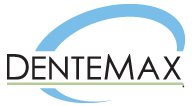If you’re looking for a way to stay in touch with your patients, have you considered the humble email newsletter? No, this is not an article from the year 2004. In fact, email is likely the most consistent way to reach your audience these days.
In this article, we’re going to dive into the benefits of offering an email newsletter, what to consider when planning one and ideas for content you can share with your patients.
Why a newsletter in 2024?
Newsletters were once the integral way to digitally connect businesses to customers before social media eventually became the go-to hub of sharing information.
But then the social media landscape shifted. Now, with businesses having to pay money to reach a fraction of their audience and post visibility determined by a complicated algorithm, it is a lot harder for small businesses to compete with dedicated marketing teams and huge budgets.
You know what email inboxes don’t have? Algorithms.
Emails aren’t hidden from you or buried based on a pay-to-play model or engagement scores. If you send someone an email, they are going to receive it. And if that wasn’t enough to get you excited about starting a newsletter, consider these stats:
- There are over 4 billion email users globally. That means more than half of the entire world population of 8 billion has an email address.
- Of those 4 billion, a whopping 99% check their email daily.
- 55% of consumers prefer email as their top communication channel, surpassing social media (27%) and text messages (17%).
But just like you wouldn’t dive into a dental procedure without a plan, you need to determine several factors before you start sending newsletters.
Content: What will your newsletter say?
This the heart of the whole conversation: what information do you want your newsletter to share? This is your content strategy and is an essential step on your email marketing journey. Do you want to share news about your practice? Oral health tips? Perhaps a mix of both?
Here are some ideas to get your brainstorming started:
- Oral health tips for patients of all ages
- Staff spotlights
- Practice information and links for making appointments
- Contests and promotions
Design: Who is creating it?
While many email marketing platforms offer newsletter templates (more on those below), you still need someone who will put all the puzzle pieces in place. Whether you are writing your own articles or sourcing them from elsewhere, someone will need to run point. Can someone on your team dedicate the time or do you have the budget to pay a freelancer? Take a look at your in-house talent and which resources you have available to you.
Platform: How will you send it?
There are dozens of email marketing platforms to choose from, each with their own advantages and price points. Below is just a small sampling of options, from industry leaders to low-cost or free platforms for emerging marketers:
- Constant Contact
- Mailchimp
- Emma
- Flodesk
- Brevo
- Sender
Cadence: How often are you sending out your newsletter?
If you are just starting out, it is important to determine how much time, money and energy you can dedicate to creating a newsletter. Depending on those factors, you may want to start quarterly or bi-monthly and scale up or down from there.
Contacts: Who will you send it to?
Here’s some good news: if you already utilize email in any capacity at your practice (appointment booking, etc.), you should already have email addresses on hand for your patients. And as long as they have given you implied consent to email (a list of those scenarios can be found here), you can start sending them a newsletter. Just make sure you give them the option to opt-out, per federal law. You can learn more about the do’s and don’ts of email marketing here.
The bottom line: The email newsletter is making a huge comeback in 2024 and will be a key channel for reaching patients as the social media landscape continues to shift.

